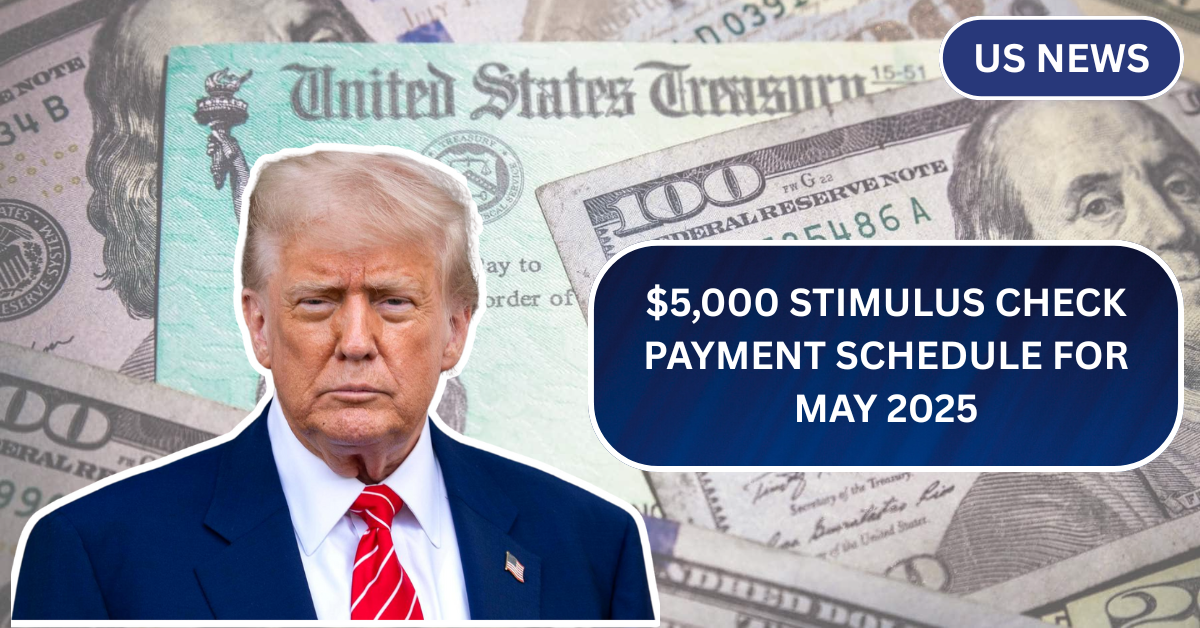Many Americans are eagerly waiting for their stimulus payments, and May 2025 comes with a big update. A special $5,000 stimulus payment is now being discussed and scheduled for distribution to eligible citizens. This news has created a lot of buzz across the country, especially among low to middle-income families who need extra financial help during rising costs.
Let’s break down what this payment is about, who qualifies, when it is expected to be sent, and everything else you need to know about the $5,000 stimulus payment in May 2025.
What Is the $5,000 Stimulus Payment?
The $5,000 stimulus payment is part of a federal relief program aimed at supporting Americans still struggling with high living expenses, job instability, and inflation. The program is not the same as the previous COVID-19 relief checks, but it’s designed with similar goals — to give direct financial aid and stimulate spending in local economies.
This particular payment is expected to be distributed in multiple phases, depending on eligibility, tax filing status, and income levels.
Who Is Eligible for the $5,000 Stimulus?
To qualify for the full $5,000 payment, you must meet certain income and residency requirements. While the final eligibility rules may vary slightly by state or specific programs, here’s what’s expected:
- Single filers earning under $75,000/year may get the full payment.
- Married couples earning under $150,000/year may receive the full $5,000.
- Heads of households with dependents may receive more.
- You must have filed your 2023 or 2024 tax return.
- In some cases, Social Security recipients or veterans may also qualify automatically, even without filing taxes.
If your income is above the threshold, you may still get a reduced payment.
When Will the $5,000 Stimulus Checks Arrive?
The payment distribution will follow a scheduled rollout, starting in May 2025. Here’s the expected payment timeline:
- Week 1 (Starting May 6) – First batch of direct deposits for eligible early filers
- Week 2 (Starting May 13) – Paper checks mailed to low-income recipients and Social Security beneficiaries
- Week 3 (Starting May 20) – Remaining direct deposits for middle-income households
- Week 4 (Starting May 27) – Final batch for late tax filers and manual processing
If you have direct deposit set up with the IRS, your payment will arrive faster. Paper checks may take 7–10 business days to reach your mailbox.
How to Check Your Payment Status?
You can track your payment status using the IRS “Get My Payment” tool on their official website. Here’s how:
- Visit irs.gov
- Click on “Get My Payment”
- Enter your SSN, date of birth, and address
- You’ll get a live update on your payment status and method (direct deposit or paper check)
The IRS will also send out confirmation letters once your payment has been processed.
Do You Need to Apply Separately?
In most cases, no separate application is required. If you filed your taxes in 2023 or 2024, the IRS will use your information to determine eligibility automatically. However, if you did not file a tax return or had zero income, you may need to submit additional information through a non-filer tool, which may reopen later in May.
If you’re on SSI, SSDI, or VA benefits, the government will likely process your stimulus payment using the data from your benefit account. Still, keep an eye out for any official announcements from the IRS or Social Security Administration.
What If You Didn’t Receive It?
If your neighbors or friends have received the stimulus but you haven’t, here are a few possible reasons:
- Your tax return was processed late
- You moved and haven’t updated your address
- You recently changed your bank account
- Your eligibility is still under review
In these cases, you can file a payment trace through the IRS or wait for the official notice to arrive in your mail.
How Can the $5,000 Be Used?
There are no restrictions on how you use the $5,000 stimulus check. People commonly spend it on:
- Paying off rent or mortgage
- Covering medical bills
- Buying groceries and essentials
- Supporting children’s education
- Starting a small business or side hustle
Many also choose to save or invest the money for future security.
Final Thoughts
The $5,000 stimulus payment in May 2025 is a major support step for many families across the country. Whether you’re catching up on bills or planning a future goal, this money could bring some much-needed financial relief. Make sure your tax filings and bank details are up to date to avoid delays.
Keep checking the IRS website or trusted news sources for the latest updates on eligibility, payment status, and deadlines.




